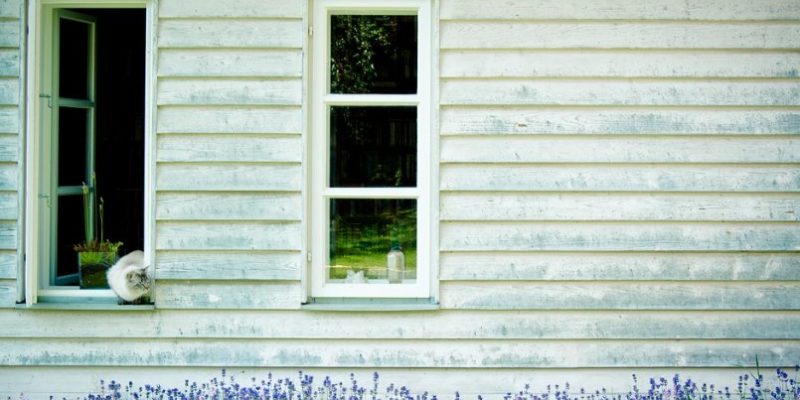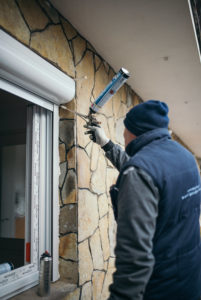Energy efficiency is not the most exciting of topics so it’s not surprising that for most homeowners it’s not a priority. However an energy efficient home warms up quicker and requires less heating, which in turn means cheaper utility bills. While it’s not the most exciting conversation to have, the benefits are well worth it.
Energy efficiency doesn’t just mean improving your home’s insulation; it also requires checking for draughts and their cause. Windows are one of the main causes of draughts in the home so we’ve put together a short guide on how you can check them and what to do if they are causing are leaks.
What are air leaks?
Air leaks refer to heat escaping from your home. Many things can cause this but heat commonly escapes through gaps within your windows and doors. Draughts result from cracks which, understandably, make your home feel cold. To compensate for the draughts homeowners crank up the central heating or the duration they have their heating on for. Unfortunately this won’t make too much of a difference to the warmth of the home, but it will increase the cost of your heating bills.
Air leaks can be costly so it is important you identify the issue as soon as possible and get them fixed.
How do you check for air leaks?
There are various ways to check for air leaks but to be completely sure we recommend a combination of the following:
- Closely inspect the windows. Over time the sealant around the windows can diminish. Go outside and have a close look to see if you can see any gaps between the window frame and the siding. If you do find gaps you will need to put some extra caulk around the windows.
- Conduct a DIY ‘smoke’ test. Close any windows or doors and turn off any appliances (fans, heaters, etc.) that may cause draughts or air movement. Light a candle and move it around your window. Hold it for a few moments next to the corners of the frame in particular and see if you notice any changes to the candle flame. If air is coming through the windows you should see the flame flicker.
- Use an infrared thermometer. Place the thermometer by your windows and see what the reading says. If it’s registering a colder temperature to the rest of the house, there’s likely to be an issue.
- Seek professional help. You could ask a technician to conduct an energy audit on your home. They will look at your heating and water systems and check your windows, doors and ventilation to check for any efficiency issues. This is quite a thorough examination of your home so it might be worth considering whether this is a necessary expense or not. If you notice some gaps in the sealant around your windows, you probably won’t need an energy audit – you can apply some caulk and weatherstripping and fix the problem yourself.
If you can’t seem to find any issues however, and your heating bills are high but your home always seems draughty, it might be worth considering contacting an auditor to conduct some professional checks. It is also worth noting that a professional will often conduct a type of smoke test and they will take an infrared reading – these are tests you can realistically do yourself pretty easily. If you want a thorough home check, professional help would be recommended but if you are worried about your windows and doors, check them yourself first – you could save yourself some money.
How do you fix air leaks?
The cause of your air leaks will determine how you fix them. For example, if you have a modern home with new energy efficient windows chances are you won’t need to replace your windows. Instead, your issue is likely to be a few gaps in the caulking. This can be fixed easily with some more sealant. If however you live in a period property with single glazed windows you may need have a more expensive task ahead. Whatever your cause there are multiple options for fixing air leaks.
- Scrape any old, cracked sealant away from the windows and apply a fresh layer of caulk on top, to seal any gaps.
- Replace the weatherstripping around your windows. Felt tape will only last a couple of years so for longevity opt for either foam or plastic tape.
- Put foam sealant between your window frame and your siding. This will help with air leaks and also stop any water entering your home.
- Change the glass panels in your windows. Some windows are better insulators than others. If you have older single glazed windows that let cold into your home easily, it may be more beneficial to simply change your windows than try any other methods. Modern windows come with an energy rating so you can check their efficiency before buying. Windows should be at least C rated although for maximum efficiency you should look for A rated windows.
- Add window films to your windows. Window films are adhesive strips that sit on top of the glass inside your home; they reflect heat back into your room rather than letting it escape through the window. These are effective but films are only a short term solution and are not as efficient as energy efficient windows.
Looking for new windows for your home? Browse our sliding sash or casement windows or find out about our handmade bespoke windows.





